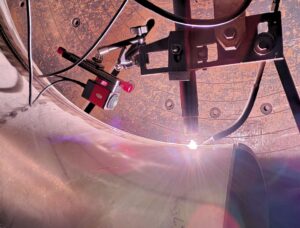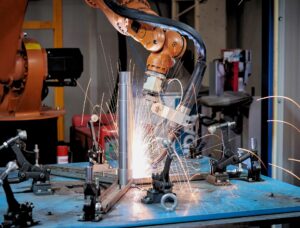In today’s fast-paced manufacturing environment, welding precision and quality assurance are more important than ever. From automotive to aerospace, industries depend on consistent, high-quality welds to keep operations running safely and efficiently. That’s where a welding camera steps in—not just as a tool, but as a game-changer for real-time weld monitoring and quality control. By capturing live arc welding images, welding cameras provide unparalleled visibility into the weld process—helping teams improve consistency, reduce weld defects, and minimize downtime. Let’s break down the top benefits of using a weld monitoring camera to elevate your welding operations.
1. Real-Time Monitoring of the Weld Process
With a camera for welding, operators and supervisors can observe the weld pool, arc behavior, and material response as the weld happens. This live feedback allows immediate adjustments, reducing mistakes and improving weld outcomes.
Key Benefits:
- Monitor heat input, penetration, and bead formation in real time
- Detect potential weld problems like porosity or undercut before they escalate
- Improve process visibility in both manual and robotic welding applications
2. Enhanced Welding Quality and Consistency
Consistent weld quality is essential in industries like oil & gas, shipbuilding, and aerospace. Welding cameras help maintain that consistency by offering a visual record of each weld and enabling adjustments on the fly.
Applications:
- Ensure uniform welds in TIG welding (Tungsten Inert Gas) and MIG and MAG welding processes
- Track bead geometry and alignment in complex metal arc welding jobs
- Maintain repeatability across shifts and operators with standardized camera-based inspection
3. Early Detection of Weld Defects
Post-weld inspection is important—but catching defects as they occur is even better. Welding camera systems help identify weld defects such as slag inclusion, lack of fusion, and excessive spatter before they cause bigger issues.
SEO Keywords Included:
- Detect and prevent weld slag inclusion in heavy fabrication
- Use high-resolution arc welding images to identify inconsistencies
- Reduce failed inspections and avoid costly rework
4. Improved Operator Safety
By allowing operators to observe welding from a distance, cameras reduce exposure to intense UV radiation, heat, and toxic fumes. This leads to safer working conditions and fewer on-site injuries.
Safety Benefits:
- Monitor dangerous or hard-to-reach welds remotely
- Reduce need for manual inspection in hot or confined areas
- Enable safer training environments for new welders
5. Time and Cost Efficiency
Fewer defects and faster corrections mean less wasted time and material. With a weld monitoring system, you can catch issues early, fix them faster, and keep projects on track.
How You Save:
- Minimize rework and scrap materials
- Speed up inspection time with visual records
- Cut production delays through predictive troubleshooting
6. Data Collection and Documentation for Quality Control
A welding inspection camera also serves as a powerful documentation tool. Weld records can be saved, reviewed, and used for traceability, audits, or customer assurance.
Useful For:
- Meeting industry-specific compliance standards
- Providing visual proof of welding quality
- Conducting post-weld analysis for process improvement
7. Seamless Integration with Advanced Welding Technology
Modern welding systems are evolving quickly. Welding cameras can be integrated with robotic welding, laser welding, and other automated solutions to boost precision and streamline workflows.
Technical Benefits:
- Enable closed-loop control with vision-based automation
- Assist with seam tracking and position correction
- Support smart manufacturing initiatives
Conclusion: Top Benefits of Using a Welding Camera
Using a welding camera isn’t just about seeing what’s happening—it’s about improving every step of your welding operation. From enhancing welding quality and operator safety to streamlining inspections and reducing downtime, the benefits are clear.
At Mecaweld, we specialize in advanced welding camera solutions designed to meet the demands of modern welding. Whether you’re working with TIG welding, MIG welding, or plasma arc welding, our systems give you the clarity and control you need to weld with confidence.
Contact us today to learn how our welding monitoring systems can transform your quality control process.



